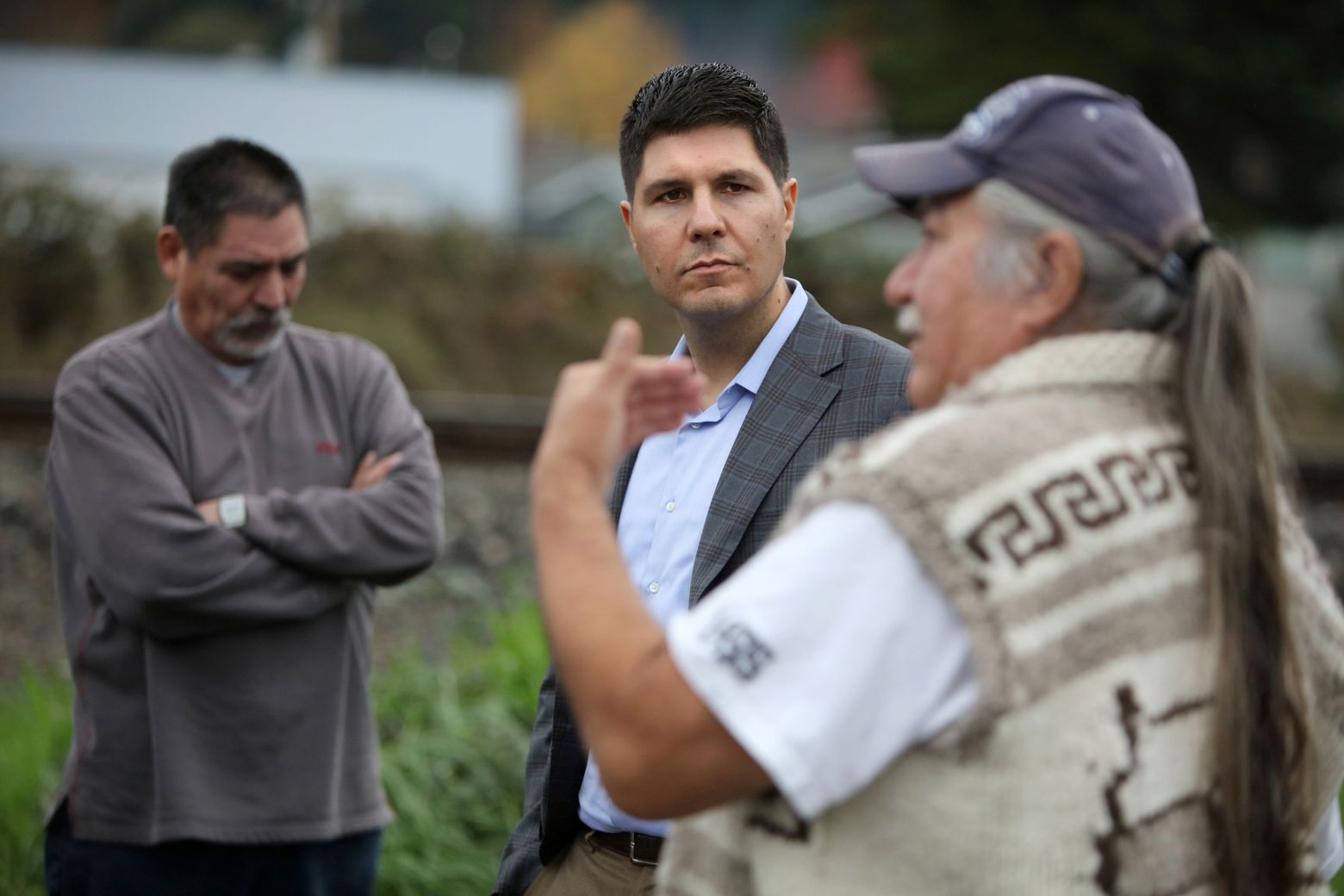Native lawyer takes on tribes that kick members out
The Seattle Times
2015-12-19
Nina Shapiro, Seattle Times staff reporter
Seattle lawyer Gabriel Galanda, a longtime defender of Native American rights, is fighting what he calls an ‘epidemic’ of tribal disenrollment.
 Native American lawyer Gabriel Galanda, center, listens to Nooksack members talk about disenrollment. (Steve Ringman/The Seattle Times) |
DEMING, Whatcom County — In his big gray truck, Gabriel Galanda makes a notable entrance into a Nooksack tribal-housing development of a couple dozen modest homes, set on a winding road about a half-hour east of Bellingham. Many of the residents, members of a sprawling clan who move easily in and out of each other’s homes, appear with platters of fry bread, chicken adobo, baked halibut, salads, cupcakes and pies.
It’s a feast befitting their biggest defender, one who has made their small tribe of a couple thousand members well-known throughout Indian country, and not in a good way. The Nooksack tribal government for the past three years has been trying to disenroll the clan in this housing development and its extended family — which would strip all 306 of tribal membership.
And for the past three years, Galanda, a Seattle-based Native American lawyer, has been fighting it. The cause has taken the 39-year-old Galanda on a journey, personal and professional, that taps into the heart of what it means to be Native American…
…Galanda’s own ancestors were Native American, Scandinavian, Portuguese and Austrian — a mixed heritage that caused him to question his identity during his formative years.
But he says he kept remembering his grandma, born on California’s Round Valley Indian Tribes reservation, putting him on her knee and saying, in her smoky, gravelly voice, “You’re Nomlaki and Concow. Don’t ever forget it.”
“Before I undertook this work,” Galanda says, “I was really caught up in blood quantum.” Now, he says, “I don’t really care.” He has settled instead on an expansive, evolving notion of “belonging” that takes into account lineage without precise blood calculations or federal documents…
Read the entire article here.




